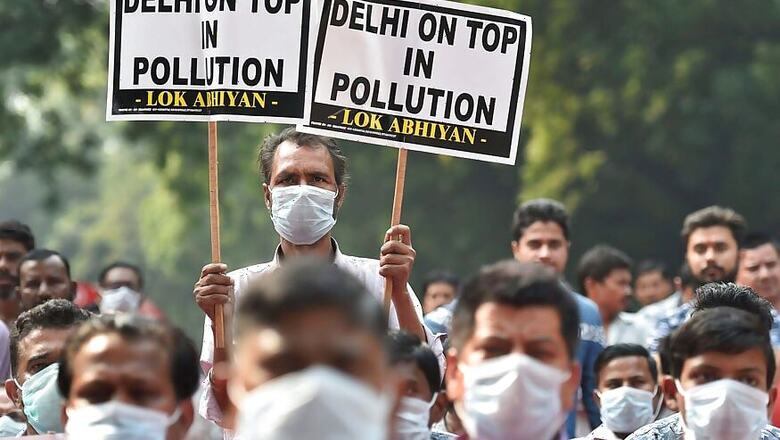
views
New Delhi: In a week when Delhi witnessed several effigy burnings marking the festival of Dussehra, the air remained surprisingly clean giving residents some hope for the coming months.
The Central Pollution Control Board’s (CPCB) data on Wednesday, a day after Dussehra, recorded AQI at 173 on the index, a drastic decrease from last year’s 373.
CPCB’s former air lab chief Dr Dipankar Saha attributed the favourable air quality to prolonged rains. “Because of extended monsoon, there has been a decrease in the long-distance transported dust and so the concentration of air pollution could not increase,” he told News18.
It is a widely known fact that the air quality in Delhi is directly affected both by local emissions and pollutants that travel from elsewhere. The long-distance transported dust, which blows in from the states of Punjab and Haryana, in particular, is the major pollutant during the months of October and November.
A source apportionment study published by IIT-Kanpur in 2014, had noted that smoke from burning organic matter like crop residues, typically from the fields of Punjab and Haryana during October and November, contributed 26% of the particulate matter (PM10 and PM 2.5) in Delhi’s air.
The prolonged monsoon this time effectively managed to curb some of these pollutants coming from the fields where farmers have already begun seasonal burning.
Professor of Environmental Engineering at IIT Delhi Mukesh Khare said along with the meteorological conditions earlier this week, several interventions by the government have also contributed to the fall.
Formulated in 2016 and notified in 2017, the Graded Response Action Plan or GRAP has been the government's answer to tackle air pollution.
The 42-point action plan, based on the same IIT Kanpur study from 2014, brought about three major policy decisions — closure of the Badarpur power plant, bringing BS-VI fuel to Delhi and the ban on Pet coke as a fuel in Delhi NCR.
"Although it takes considerable time to see the effect of any intervention, in this case perhaps we are seeing the impact. I cannot discount that," Khare said.
The real test
The clean air spell was, however, short-lived. As of Thursday, the air quality once again bordered on “poor” as the AQI registered an increase to 223. IMD’s regional forecasting director Kuldeep Srivastasa explained that a change in winds could now make matters worse for the capital city.
“The day after Dussehra, easterly winds were flowing and the winds were strong, which blew away the pollutants. However, from Thursday, the wind direction changed. This north-westerly wind will now bring in any pollutants from Punjab and Haryana,” he said.
In the past three days alone, the number of fires spotted in the neighbouring states has drastically increased, according to data by the United States' National Aeronautics and Space Administration (NASA). The Council on Energy Environment and Water data indicated a nearly eight-fold spike in the numbers i.e. from 46 registered on October 7 to a whopping 353 on Thursday.
“SAFAR had predicted that there is likely to be a deterioration starting from October 12," Gufran Beig, programme director of System of Air Quality and Weather Forecasting and Research (SAFAR), said.
The institute has predicted that AQI levels will remain in the poor category over the next three days. “We know there is a small decrease in PM 2.5 but we need to be cautious,” said Civil Engineering & Earth Sciences Professor from IIT Kanpur SN Tripathi. “The real test will be from October 20 to November.”




















Comments
0 comment